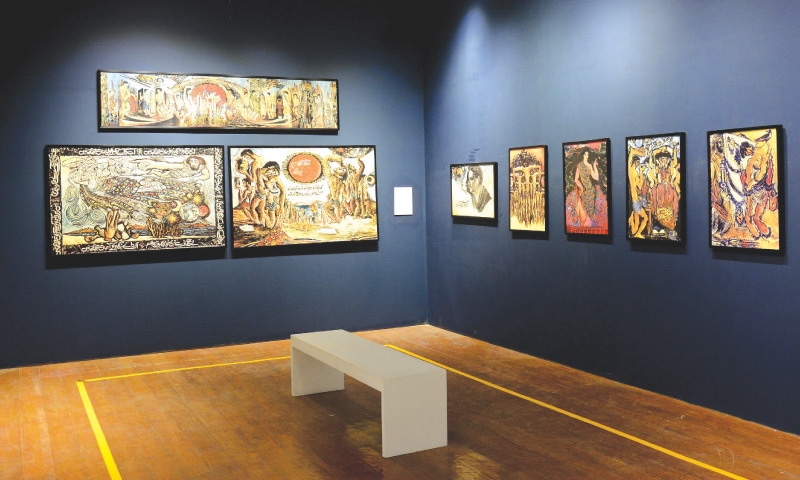
At the heart of the Zenana Mardana exhibition held at Frere Hall, Karachi, in February 2022, was the thought-provoking contribution of artist Sayeda Habib, whose practice focuses on duality, transcendence, and the spiritual dimensions of human identity. In a show themed around the masculine and feminine—the yin and yang within us all—Habib’s work brought a profound philosophical and mystical perspective that complemented and deepened the exhibition’s narrative.
Artistic Philosophy Rooted in Inner Unity
Sayeda Habib, known for integrating Sufi philosophy and metaphysical themes into her visual language, approached the Zenana Mardana exhibition not just as a gender dialogue, but as an exploration of the self. Her artworks consistently reflect an inquiry into the spiritual and emotional dimensions of existence, and her presence in this exhibition echoed her long-standing interest in the reconciliation of opposites.
Drawing from her earlier series like Dance of Dualities, Habib’s contribution extended the idea that gender is not merely physical or social, but spiritual—an internal dialogue between energies seeking balance. This concept aligns with the show’s broader framework, but Habib’s work added a layer of introspection, moving the discourse from the social into the cosmic.
Habib’s Symbolic Vocabulary and Use of Space
While many artists in Zenana Mardana used satire, abstraction, or realism to portray gender identity, Habib leaned into symbolism and metaphysics. Her compositions often allude to orbits, circles, and centers—visual metaphors that suggest human consciousness gravitating toward an inner source of unity. These forms are not arbitrary; they are reflections of cosmic order and the belief that the human soul mirrors the structure of the universe.
Habib’s work is deeply influenced by Sufi concepts like Kashf (unveiling) and the journey of the heart—a space where dualities dissolve and self-negation leads to divine understanding. Her art invites viewers into a quiet, meditative experience, where gender is not seen as a boundary but as a dimension of the soul’s evolution.
Positioning in the Exhibition’s Narrative
Curated under the monumental canopy of Arz-o-Samawaat—a tribute to Sadequain and other legendary Pakistani artists—the exhibition featured 15 artists. Amid works that dealt with societal constructs and personal identity, Habib’s pieces stood out for their ethereal stillness and inner focus. They did not demand attention through size or color, but rather evoked reflection through balance, form, and silence.
Her spiritual minimalism resonated strongly within the curatorial vision of the show, especially in contrast to more performative or provocative works. While other artists challenged gender norms through body, fashion, and satire, Habib approached the question with the spiritual assertion that “in the realm of the heart, there is no Zenana or Mardana.”
Habib’s Expanding Influence in Contemporary Art
Sayeda Habib continues to position herself among the few Pakistani artists exploring the intersection of mysticism, identity, and visual language. Her work bridges tradition and modernity, offering a non-political yet deeply human response to issues of self and society. In Zenana Mardana, she demonstrated that art need not shout to be radical—sometimes, the subtlest expressions lead to the most profound insights.
Exhibition Context
- Event: Zenana Mardana – A Tribute to Master Artists
- Dates: February 10–24, 2022
- Venue: Sadequain Gallery, Frere Hall, Karachi
- Curated by: Phenomena (Pomme Amina Afzal)
- Original Source: EXHIBITION: YIN AND YANG – Dawn News
- Artist (Rewritten Article): Sayeda M. Habib
